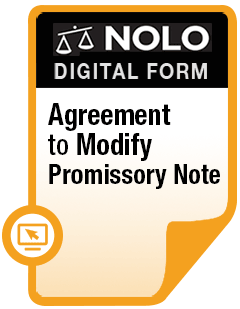A realistic budget is your best weapon against overspending.
Creating a budget is an important step toward achieving financial stability and reaching your money goals. Whether you're looking to save more, pay off debt, or simply gain control over your spending, learning how to make a budget can help you manage your finances with confidence.
By tracking your income, organizing your expenses, and choosing the right budgeting system, you can build a personalized plan that fits your lifestyle and sets you up for long-term financial success.
Make a List of Your Expenses
The first step in making a realistic budget is figuring out where your money goes. To keep track, make an expense record. You can make the expense record using an app on your phone, on your computer, using a spreadsheet, or you can choose an old-school approach and use paper and a pen.
How to Track What You Spend
Here's how to determine precisely how much you're spending:
- Step 1. Determine the categories into which your expenses fall. See the chart below for suggested categories. List your categories of expenses down the left side of your spreadsheet (or piece of paper).
- Step 2. Then, make 13 columns. Label the first one "projected" and the remaining 12 with the months of the year. Unless today is the first of the month, start with next month.
- Step 3. Using your total actual expenses for the two months you tracked and the other expenses you added, project your monthly expenses for the categories you've listed. Make a note of when smaller expenses, such as your yearly Homebrewers Association dues, are due so you can adjust your budget for that month. These temporary adjustments make more sense than trying to save $4 each month to cover an annual cost.
- Step 4. Enter your projected monthly expenses into the "projected" column of your budget sheets.
- Step 5. Add up all projected monthly expenses and enter the total into a "Total Expenses" category at the bottom of the projected column.
- Step 6. Enter your projected monthly income below your total projected expenses.
- Step 7. Figure out the difference.
Where's Your Money Going?
At the end of two months, review your totals. Are you surprised at the dollar total or the number of items you bought? Are you impulsively spending your money on many different items, or do you consistently tend to spend it on the same types of things?
Then, ask yourself if you could have eliminated certain expenses or reduced the cost of essentials: Did you compare prices when shopping? Did you try to find a coupon code or rebate to get a lower price? Could you choose a less expensive option, like working out at home rather than paying for a gym membership?
Next Steps
Ultimately, getting or skipping a cold brew coffee here and there won't make a huge difference in your overall budget, but a series of decisions will. If you always eat out, buy only the most expensive clothing, or habitually purchase whatever you want whenever you want it, these costs add up.
The trick is to figure out where your money is going and then find ways to lower certain expenses in a way that works for you. If you can't reduce your costs significantly, consider ways to increase your income.
Total Your Income
Your expenditures account for only half of the picture. You also need to add up your monthly income.
Again, on your phone, spreadsheet, or a blank sheet of paper, list the jobs for which you receive a salary or wages. Then, list all self-employment for which you receive income, including gig income, sales commissions, and money you earn doing any side hustles. Finally, list other sources of income, such as:
- bonus pay
- dividends and interest
- alimony or child support
- pension or retirement income, and
- public assistance.
Record Your Net Income
Next to each source of income, list the net (after deductions) amount you receive each pay period. If you don't receive the same amount each period, average the last 12.
Next to each net amount, enter the period covered by the payment, such as weekly, twice monthly (24 times a year), every other week (26 times a year), monthly, quarterly, or annually.
Determine Your Monthly Income
Finally, multiply the net amount by the number of pay periods to determine the monthly amount. For example, if you are paid twice a month, multiply the net amount by two. If you are paid every other week, multiply the amount by 26 (for the annual amount) and divide by 12.
When you're done, total up all the amounts. This is your total average monthly income.
Make Your Budget
After you keep track of your expenses and income for a few months, you're ready to create a budget. Your goals in making a budget are to control your impulses to overspend and start saving money.
Steps for Making a Budget
To create your budget, follow these steps:
- Step 1. Determine the categories into which your expenses fall. See the chart below for suggested categories. List your categories of expenses down the left side of your spreadsheet (or piece of paper).
- Step 2. Then, make 13 columns. Label the first one "projected" and the remaining 12 with the months of the year. Unless today is the first of the month, start with next month.
- Step 3. Using your total actual expenses for the two months you tracked and the other expenses you added, project your monthly expenses for the categories you've listed. Make a note of when smaller expenses, such as your yearly Homebrewers Association dues, are due so you can adjust your budget for that month. These temporary adjustments make more sense than trying to save $4 each month to cover an annual cost.
- Step 4. Enter your projected monthly expenses into the "projected" column of your budget sheets.
- Step 5. Add up all projected monthly expenses and enter the total into a "Total Expenses" category at the bottom of the projected column.
- Step 6. Enter your projected monthly income below your total projected expenses.
- Step 7. Figure out the difference.
Categories of Expenses
|
Category |
Expense |
|
Home |
rent/mortgage, property taxes, homeowners' insurance, homeowners' association dues, telephone, gas and electric, water and sewer, streaming services, internet service, garbage, household supplies, housewares, furniture and appliances, cleaning, yard or pool care, snow removal, maintenance and repairs |
|
Food |
groceries, breakfast out, lunch out, dinner out, coffee/tea, snacks |
|
Clothing |
clothes, shoes and accessories, laundry and dry cleaning |
|
Self Care |
toiletries and cosmetics, haircuts, massage, health club membership, donations |
|
Health Care |
insurance, medications, vitamins, doctors, dentist, eye care, therapy |
|
Transportation |
car payments, insurance, road service club, registration, gasoline, maintenance and repairs, parking and tolls, public transit, cabs, parking tickets |
|
Entertainment |
music, movies, concerts, theater, ballet, museums, sporting events, hobbies and lessons, club dues or membership, books, software and games |
|
Dependent Care |
child care, clothing, allowance, school expenses, toys and entertainment |
|
Pet Care |
grooming, vet, food, toys and supplies |
|
Education |
tuition or loan payments, books and supplies |
|
Personal Business |
supplies, postage, bank and credit card fees, legal fees, accounting fees |
|
Travel |
family trips, vacations |
|
Gifts & Cards |
birthdays, holidays, anniversaries |
|
Taxes |
deductions, credits, penalties |
|
Insurance |
life insurance, car insurance, home insurance, pet insurance |
|
Savings & Investments |
stocks, bonds, 401k, saving accounts, CDs |
If your expenses exceed your income, you will have to cut expenses or increase your income. If finding more income isn't realistic, focus on decreasing your expenses. The trick is doing this without depriving yourself of items or services you truly need.
Reduce the amount you spend in each category. Review your expenses and look for categories you can comfortably reduce slightly. For example, let's say you need to cut $175 from your budget. You had planned on spending $200 a month on meals at restaurants, but are willing to decrease that to $150, thereby saving $50.
Preserve things you can't live without. Make a list of things you feel you can't live without, and whittle down your other expenses to accommodate them. For example, you might decide to work out at home rather than at a gym because you know you'd go nuts if you couldn't eat out with friends weekly. If you make room for at least some of the things you love most, you're much more likely to succeed at your plan.
Staying on Track
Don't think of your budget as etched in stone. If you do, and you spend more on an item than you've budgeted, you'll get frustrated and be more likely to scrap the budget altogether.
Review your budget and make adjustments. Check your figures periodically. If you never have enough money to make ends meet, it's time to adjust some more. Or, if you constantly overspend in one area, change the projected amount for that category and trim the money from another category.
Consider larger financial changes. If you continually come up short, you might need to consider some larger changes. For example, you might sell your newer car for an older used car to free yourself from car payments. As you make adjustments to your budget, give careful thought to your priorities. Think about what you value, and be honest with yourself.
Be willing to sacrifice. You might have to sacrifice some things that feel important to you. But don't expect to stick to your budget if you take away all but the essentials. Be realistic.
More Information
To learn more about managing your finances wisely, read Avoiding Financial Trouble: Ten Tips.
Also, consider getting Solve Your Money Troubles: Strategies to Get Out of Debt and Stay That Way, by Amy Loftsgordon and Cara O'Neill (Nolo), which is a comprehensive guide to getting back on your financial feet. It provides sample budget sheets, information on how to negotiate with creditors and deal with debt collectors, and more.
Talk to a Lawyer
Need a lawyer? Start here.
How it Works
- Briefly tell us about your case
- Provide your contact information
- Choose attorneys to contact you
- Briefly tell us about your case
- Provide your contact information
- Choose attorneys to contact you



